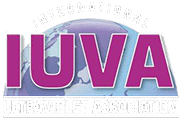Chlorine reduction can be an expensive and time-consuming ordeal for many industrial operations, but one company is honing in on helping businesses attain ultrapure water for processes and production.
UV Guard Technical Director Luke Chamberlain said that while activated carbon is often applied to reduce chlorine levels in water, using UV is more efficient and cost-effective in some scenarios.
“Activated carbon is commonly used, but it has disadvantages because quite a large amount of carbon may be required to get the chlorine to a certain level. UV can do the same thing and it’s much more of a streamlined system,” Chamberlain said.
“With carbon, when it has reached its adsorption capacity, you need to either regenerate it or replace it, which can be costly and labour intensive. But a UV system only requires the replacement of a UV lamp once a year.”
UV Guard recently helped a company that specialises in providing hospitals with renal dialysis (RD) machines, which required water with less than 0.1mg/L chlorine.
“The RD machines require a certain water quality. At this particular location, they had high levels of free chlorine in the town water supply, which meant that the carbon filtration wasn’t able to achieve the desired chlorine reduction,” Chamberlain said.
“In order for them to reduce the chlorine using carbon, they would have had to increase the size of the carbon vessels by an unfeasible amount.”
UV Guard created a custom-designed UV solution for the company, helping to reduce costs of treatment while also making the most of the existing treatment process.
“We had records of what it was achieving with the existing carbon filtration and we designed a UV solution that would reduce the chlorine amount so that it could be safely used in the machines,” Chamberlain said.
“It is a very compact solution that can be retrofitted into an existing treatment process and is very simple to install. Each case would be different, but where there is a reliance on carbon and having to replace it frequently, UV is a much cheaper solution.”
Chamberlain said one of the key strengths of utilising UV is that it can be applied to many different treatment processes.
“It can be used anywhere you need to reduce chlorine levels where ultrapure water is required for production or a process. It can also be used to inactivate microorganisms, making it suitable for an array of water treatment applications,” he said.
Related article:
Could the Sun’s radiation clean microplastics from wastewater and waterways?
Legionella OutBreak Sydney
Your Content Goes Here Your Content Goes Here Safeguarding Your Water: The Essential Role of UV Disinfection in Preventing Legionella Outbreaks Legionella, the notorious bacteria responsible for Legionnaires' disease, has once again made headlines, stirring concerns across various sectors. With recent reports from NSW Health, [...]
AWA Water Journal – June 2015 – New power supply boxes make mobile and off-grid water disinfection possible
Your Content Goes Here Your Content Goes Here UV-Guard’s NEW PLC controller has been mentioned in the June edition of the Australian Water Association (AWA) Water journal. The following text has been taken from the publication: “Off-grid and mobile water disinfection is now possible thanks [...]
Is using UV a better way to reduce chlorine levels in water?
Share Your Content Goes Here Your Content Goes Here Chlorine reduction can be an expensive and time-consuming ordeal for many industrial operations, but one company is honing in on helping businesses attain ultrapure water for processes and production. UV [...]
Aquafides UV water disinfection systems
Share Your Content Goes Here Your Content Goes Here Aquafides UV water disinfection systems are validated to meet the stringent global performance benchmarks as part of DVGW, ÖVGW and SVGW certification. The DVGW (German Technical and Scientific Association for [...]
Get in touch
This website has lots about us. But it’s your needs that matter most. Let’s talk.
Newsletter
Stay up-to-date with our very latest news, technology, offers and events.










